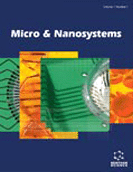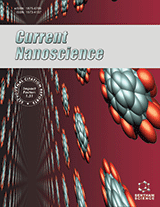Abstract
This paper reviews the most recent advances in the formulation of materials for H2 storage. A revision of the goals for such materials, with relevance to the transportation issues is given. The objectives are indeed stringent as for gravimetric and volumetric density, as well as for the stability to repeated loading cycles. The attention will be particularly focused on micro- and nanoporous sorbents, where a proper design of pore size is important to optimize capacity and the energetics of the sorbent/sorbate interaction. Furthermore, the same parameter, together with particle size is important to minimize mass transfer limitations and to improve diffusion kinetics. The latter may be increased also by functionalization, e.g. with metallic nanoparticles.
Examples will be provided mainly pointing to carbon based materials, to novel inorganic compounds and to metal organic frameworks or coordination polymers. These different subjects will be considered from the points of view of the synthesis/functionalization, of their performance, predominantly under practically relevant conditions. Some references will be also given regarding theoretical issues, e.g. in the case of graphene-like materials.
Finally the research issues to be rapidly solved to propose a convenient material to the fuel cells market will be addressed.
Keywords: H2 storage materials, Metal-organic framework, Carbon nanotubes, Active carbon, H2 adsorption, Toxicity, Purity (H2 from storage system), Fullerenes
Micro and Nanosystems
Title: Micro- and Nano-Structured Materials for H2 Storage: Application to Mobile Fuel Cell Systems
Volume: 3 Issue: 4
Author(s): Ilenia Rossetti
Affiliation:
Keywords: H2 storage materials, Metal-organic framework, Carbon nanotubes, Active carbon, H2 adsorption, Toxicity, Purity (H2 from storage system), Fullerenes
Abstract: This paper reviews the most recent advances in the formulation of materials for H2 storage. A revision of the goals for such materials, with relevance to the transportation issues is given. The objectives are indeed stringent as for gravimetric and volumetric density, as well as for the stability to repeated loading cycles. The attention will be particularly focused on micro- and nanoporous sorbents, where a proper design of pore size is important to optimize capacity and the energetics of the sorbent/sorbate interaction. Furthermore, the same parameter, together with particle size is important to minimize mass transfer limitations and to improve diffusion kinetics. The latter may be increased also by functionalization, e.g. with metallic nanoparticles.
Examples will be provided mainly pointing to carbon based materials, to novel inorganic compounds and to metal organic frameworks or coordination polymers. These different subjects will be considered from the points of view of the synthesis/functionalization, of their performance, predominantly under practically relevant conditions. Some references will be also given regarding theoretical issues, e.g. in the case of graphene-like materials.
Finally the research issues to be rapidly solved to propose a convenient material to the fuel cells market will be addressed.
Export Options
About this article
Cite this article as:
Rossetti Ilenia, Micro- and Nano-Structured Materials for H2 Storage: Application to Mobile Fuel Cell Systems, Micro and Nanosystems 2011; 3 (4) . https://dx.doi.org/10.2174/1876402911103040331
| DOI https://dx.doi.org/10.2174/1876402911103040331 |
Print ISSN 1876-4029 |
| Publisher Name Bentham Science Publisher |
Online ISSN 1876-4037 |
 8
8
- Author Guidelines
- Bentham Author Support Services (BASS)
- Graphical Abstracts
- Fabricating and Stating False Information
- Research Misconduct
- Post Publication Discussions and Corrections
- Publishing Ethics and Rectitude
- Increase Visibility of Your Article
- Archiving Policies
- Peer Review Workflow
- Order Your Article Before Print
- Promote Your Article
- Manuscript Transfer Facility
- Editorial Policies
- Allegations from Whistleblowers






















